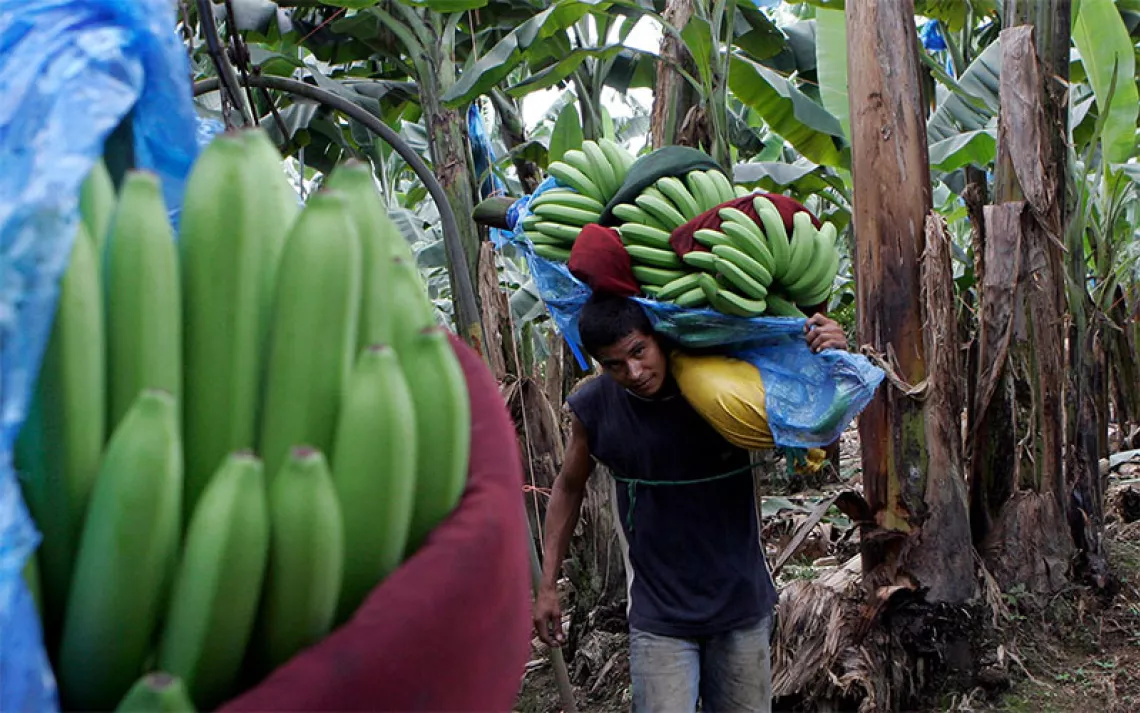California Just Banned Chlorpyrifos. Why Won’t the EPA?
Numerous studies show that the pesticide is harmful to human health

Photo by narongcp/istock
On May 8, California governor Gavin Newsom’s administration announced plans to ban chlorpyrifos after an independent panel concluded that the pesticide is damaging to human health.
The chemical belongs to a class of neurotoxins called organophosphates and was banned for indoor pest control in 2001. But 6 million pounds of it are applied annually to a wide range of crops, including oranges, alfalfa, almonds, and grapes.
That it causes neurological damage in humans is hardly news. Studies over the past decade by Columbia University, the University of California at Davis, and UC Berkeley have all found that children whose mothers were exposed to the chemical while pregnant suffer negative effects such as increased rates of autism and attention deficit disorder as well as lower IQs.
In 2015, after its own multiyear review, the EPA also concluded that chlorpyrifos was harmful to human health and recommended that the agency ban it permanently. Then in March 2017, newly appointed EPA administrator Scott Pruitt reversed the decision, claiming that the science was inconclusive.
Environmentalists and community groups sued, and in August, the Ninth Circuit Court of Appeals ruled that there was no justification for the EPA's decision; it ordered the agency to reinstate the ban within 60 days.
The EPA responded by asking the court to reconsider, and in February the Ninth Circuit granted the agency’s request for a rehearing. Last month, the court gave the EPA 90 days to respond to objections over its continued approval of chlorpyrifos and ordered it to complete its review of comments.
In the meantime, California’s decision could have broad reverberations. It’s the second state to ban the chemical—Hawaii instituted a ban a year ago—but with its enormous output, California is an agricultural juggernaut. The state grows a third of the country’s vegetables and two-thirds of its fruits and nuts.
“[The ban] has national and international implications,” says Medha Chandra, a policy advocate at Pesticide Action Network. “There is so much momentum now in New York, Connecticut, and Oregon because of this California announcement.” And, she says, environmental activists in Europe have taken note too.
The California Farm Bureau Federation criticized the move, arguing that it could jeopardize the ability of the state’s farmers to produce their crops. President Jamie Johansson warned in a statement that once the ban takes effect, which could take as long as two years, food grown in California may become more expensive and less plentiful.
In fact, while still substantial, use of chlorpyrifos in California has declined over the past decade as growers have sought out safer alternatives. In 2016, just over 900,000 pounds of the pesticide were applied, down from 2 million pounds in 2005.
Governor Newsom’s just-released budget proposes $5.7 million to help farmers transition to more sustainable methods for managing pests.
"California’s action to cancel the registration of chlorpyrifos is needed to prevent the significant harm this pesticide causes children, farm workers, and vulnerable communities," CalEPA Secretary Jared Blumenfeld said in a statement. "This action also represents a historic opportunity for California to develop a new framework for alternative pest-management practices."
“It's about changing the way agriculture is done in the state,” Chandra says. “Moving to holistic, ecological methods that protect the environment and people—that’s where the long-term shift is needed.”
 The Magazine of The Sierra Club
The Magazine of The Sierra Club



